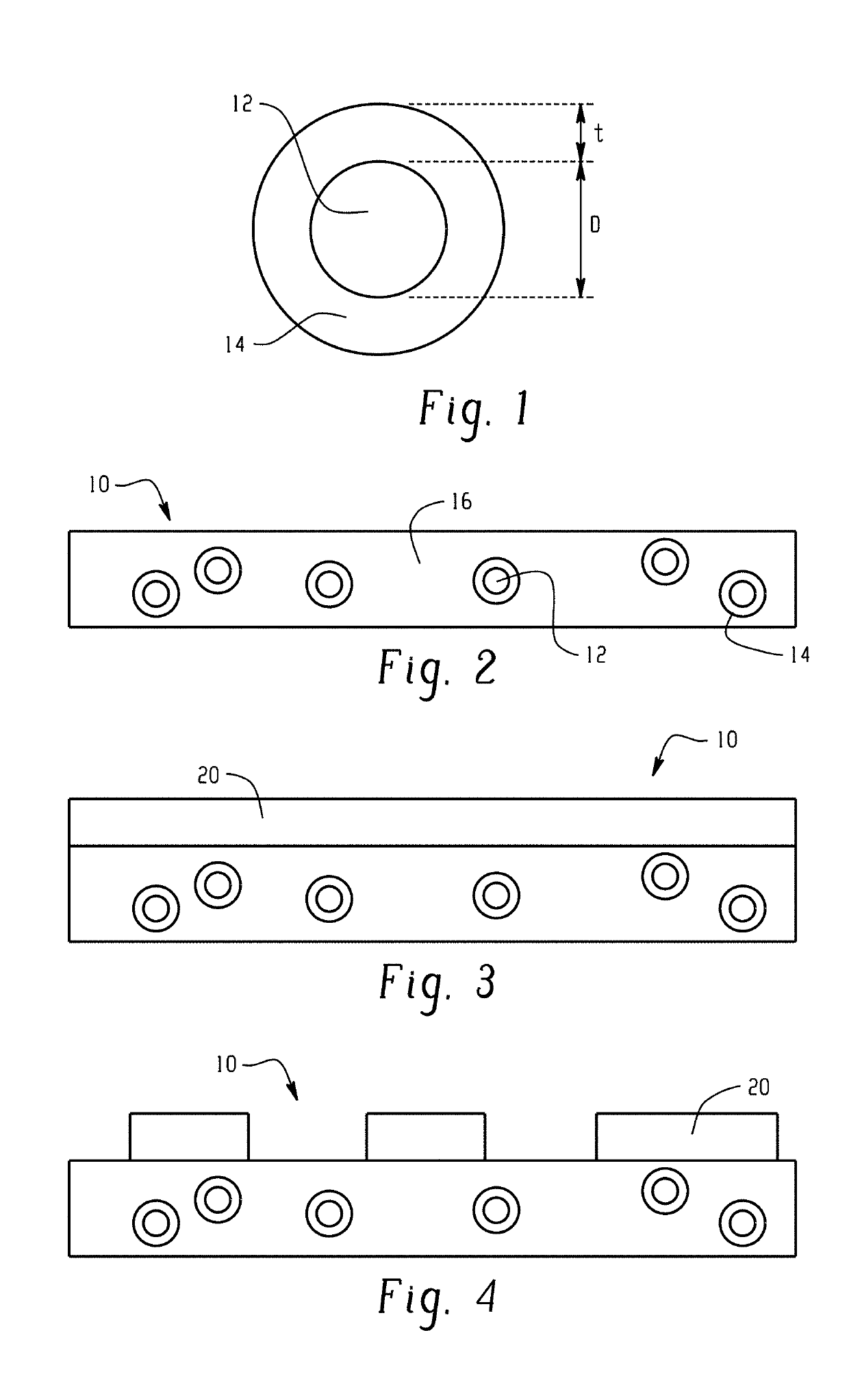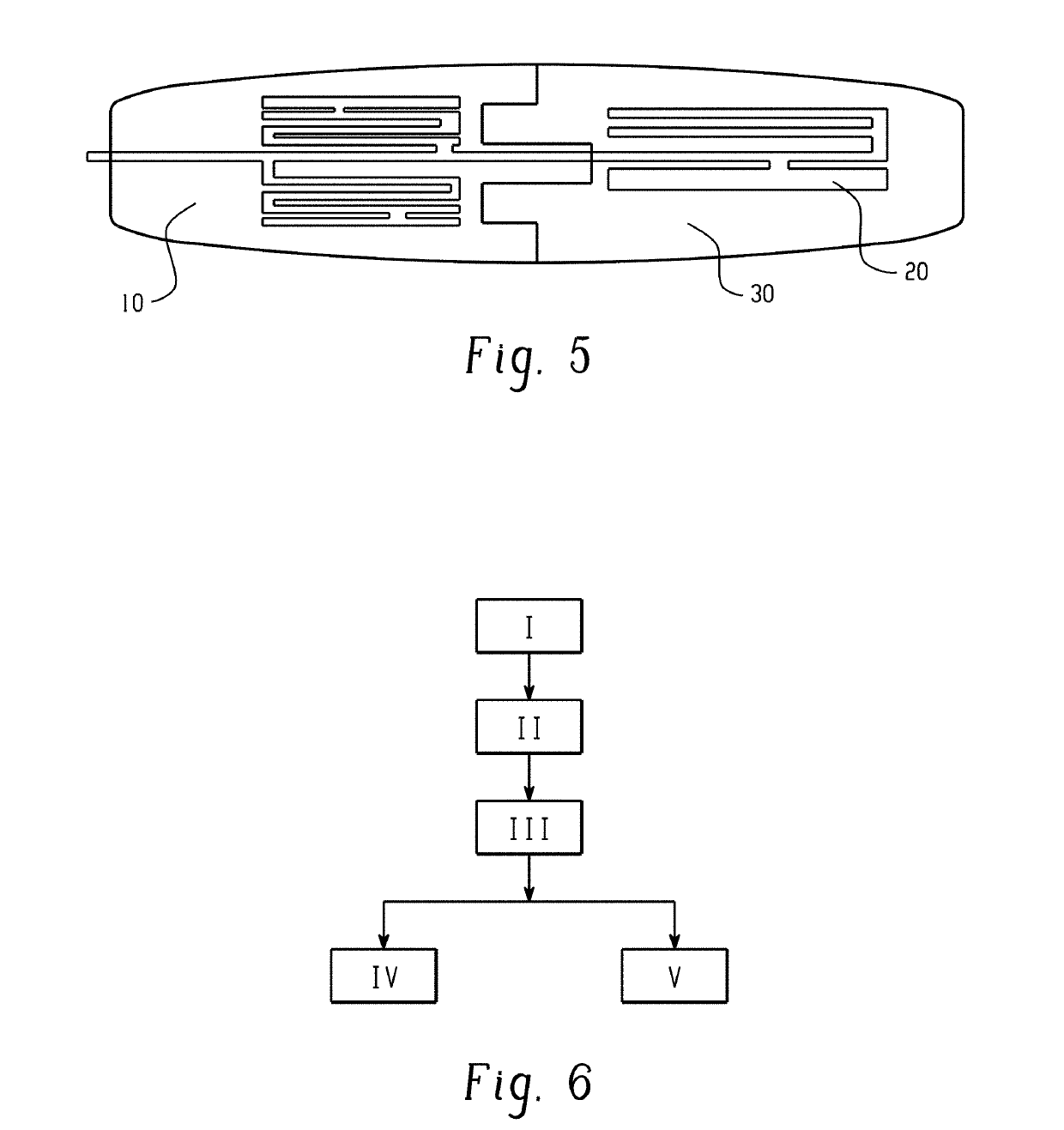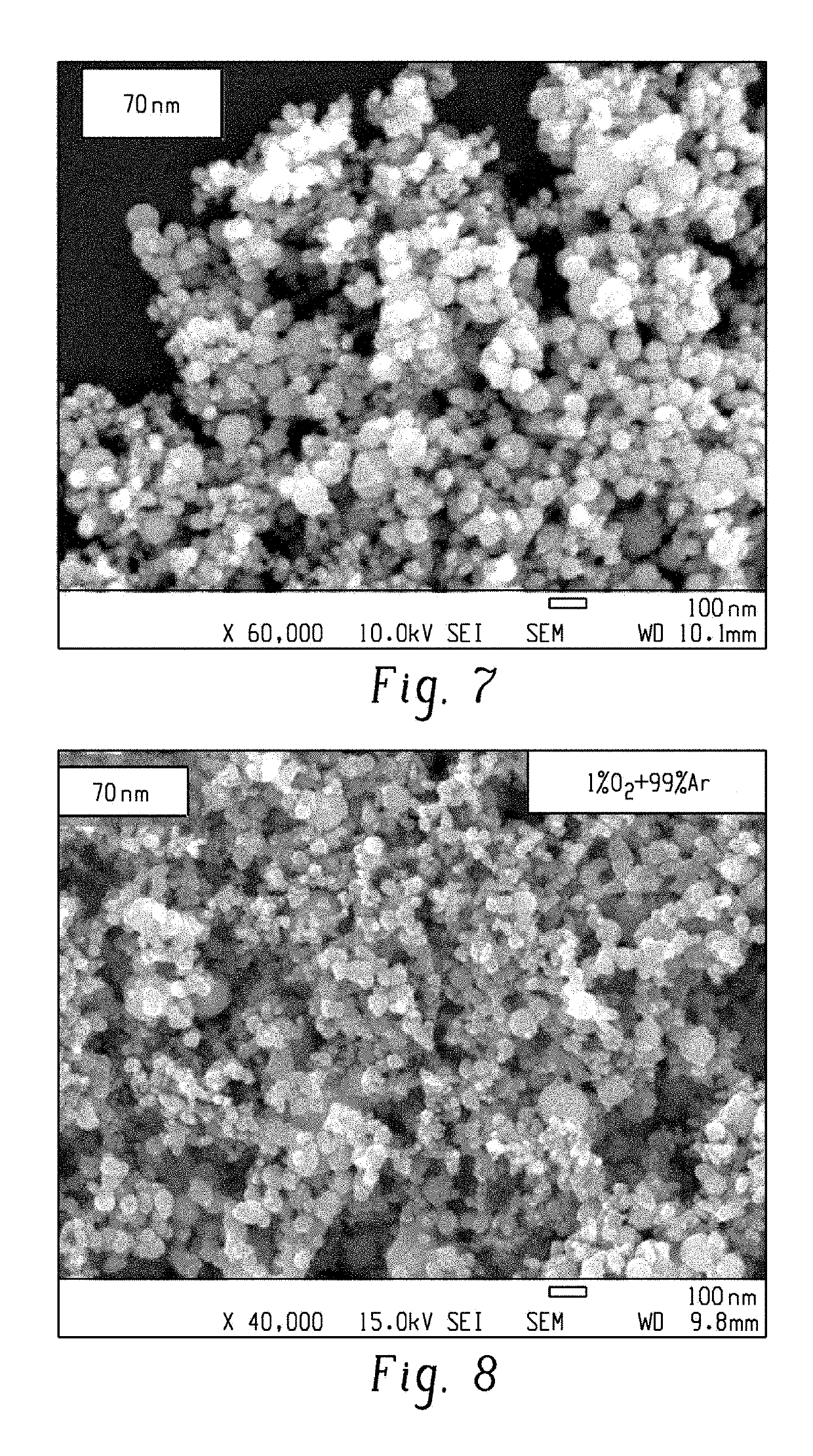Core-shell particles, magneto-dielectric materials, methods of making, and uses thereof
- Summary
- Abstract
- Description
- Claims
- Application Information
AI Technical Summary
Benefits of technology
Problems solved by technology
Method used
Image
Examples
examples
[0084]In the examples, the magnetic particles were prepared by mixing raw powders of Fe and Ni in a polyurethane jar with Φ3 mm stainless steel balls for 2 to 24 hours. In accordance with the parameters set forth in Table 1, the mixed powder was then fed to a radio-frequency (RF) induction thermal plasma system by a carrier gas of argon and hydrogen, introduced to a plasma jet, and then cooled using a quenching gas of argon to form a plurality of particles. The particles were then collected in the collection chamber.
TABLE 1Processing ParametersValuePower of thermal plasma30 kilowattsVoltage of thermal plasma10.5 kilovoltsCurrent of thermal plasma3.5 AmpereCentral gas, Ar2.0 meters cubed per hourSheath gas, Ar2.0 meters cubed per hourCooling gas, Ar2.0 meters cubed per hourCarrier gas, H250 to 100 liters per hourCarrier gas, Ar100 to 150 meters cubed per hour
[0085]In order to determine the electromagnetic properties of the magnetic particles, the magnetic particles were mixed with pa...
examples 1-4
of Magnetic Particles
[0086]Four samples of magnetic particles were prepared by varying the combined feed rate of the iron and nickel powder into the plasma chamber. Feed rates of 0.5 grams per minute (g / min), 1 g / min, 2 g / min, and 5 g / min for mixed Ni and Fe powders were used to form the magnetic particles of Examples 1-4, respectively, and resulted in magnetic Fe66Ni34 particles having an average particle sizes of 50 nm, 70 nm, 100 nm, and 120 nm.
[0087]Specific values of the relative permeability (μ′), the magnetic loss tangent (tan(δμ)), the specific magnetic loss tangent (tan(δμ) / μ′), and the relative permittivity (E′), at different frequencies as well as the resonance frequency (fr) are shown in Table 2.
TABLE 2Example1234FrequencyParticle size (nm)50701001201 GHzμ′1.941.833.393.37tanδμ0.1730.1540.3810.312tanδμ / μ′0.0890.0840.1120.093ε′251950452 GHzμ′1.931.832.832.77tanδμ0.0630.0730.4380.400tanδμ / μ′0.0330.040.1550.144ε′241853443 GHzμ′1.691.632.382.25tanδμ0.0730.0830.5180.486tanδμ / ...
examples 5 and 6
0 nm Core-Shell Magnetic Particles
[0088]The particles of Example 2 having an average particle size of 70 nm were annealed in a low oxygen environment of 1 volume percent oxygen in argon at 500° C. for 30 minutes to form the shell on the nanoparticles. The resulting core-shell nanoparticles had a shell with a thickness of 2 to 50 nanometers. FIG. 7 and FIG. 8 are scanning electron microscopy images of the particles before and after annealing in oxygen, respectively.
[0089]The electromagnetic properties of the core-shell magnetic particles were then determined for the particles of Example 2 and Example 5 as described above. In Example 6, the electromagnetic properties of the same core-shell magnetic particles of Example 5 were determined, but using toroids comprising 60 volume percent of the core-shell magnetic particles.
[0090]The real (μ′) and imaginary (μ″) parts of the permeability for unannealed magnetic particles are shown in FIG. 9 for the magnetic particles of Example 2 and the ...
PUM
| Property | Measurement | Unit |
|---|---|---|
| Thickness | aaaaa | aaaaa |
| Thickness | aaaaa | aaaaa |
| Thickness | aaaaa | aaaaa |
Abstract
Description
Claims
Application Information
 Login to View More
Login to View More - R&D
- Intellectual Property
- Life Sciences
- Materials
- Tech Scout
- Unparalleled Data Quality
- Higher Quality Content
- 60% Fewer Hallucinations
Browse by: Latest US Patents, China's latest patents, Technical Efficacy Thesaurus, Application Domain, Technology Topic, Popular Technical Reports.
© 2025 PatSnap. All rights reserved.Legal|Privacy policy|Modern Slavery Act Transparency Statement|Sitemap|About US| Contact US: help@patsnap.com



